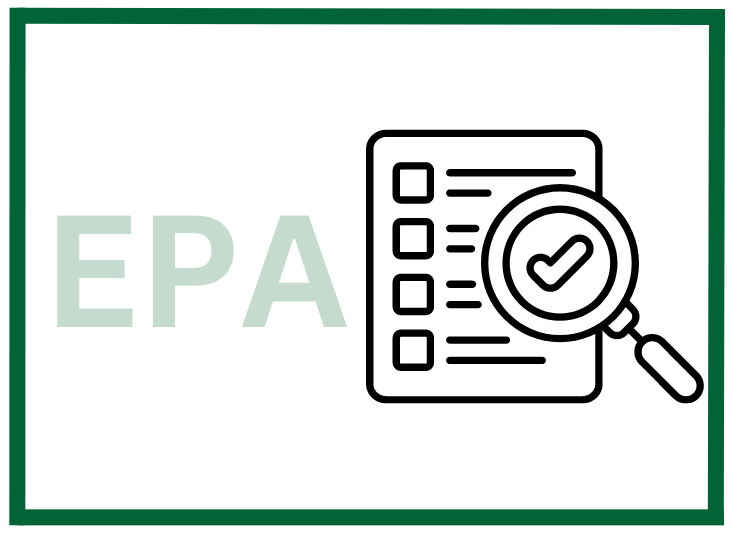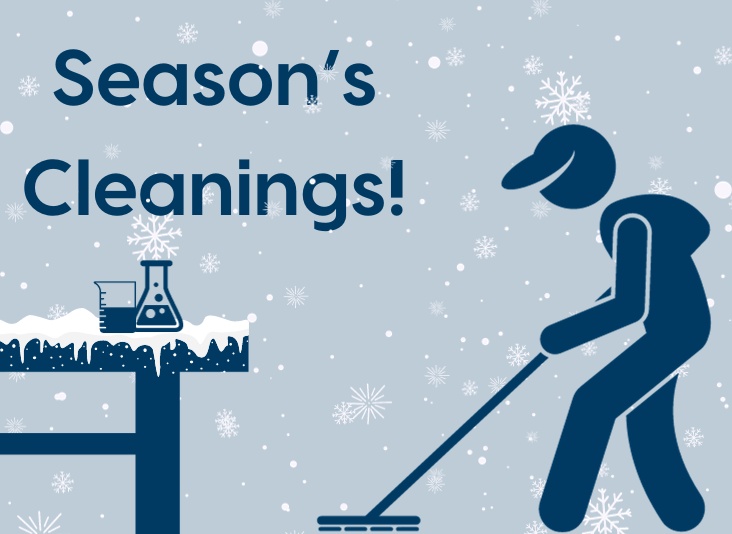11 Steps for EPA Inspection Success
Environmental Protection Agency (EPA) regulatory inspections often come without warning. If you are unprepared for these inspections, you risk facility and operational non-compliance, as well as associated fines and public scrutiny. Here, I will analyze ways you can remain prepared for these inspections—helping you stay vigilant, compliant, and safe.
EPA: To Sustainably Manage Air, Water, and Waste
Chances are, if you are an institution or facility that generates hazardous waste, you are fully aware of the EPA’s mission to manage air, water, and waste in a manner that reduces the impacts to human health and the environment.
Throughout the 1950s and 1960s, the public became increasingly concerned with growing air and water pollution. That, along with Rachel Carson’s Silent Spring, ultimately led President Richard Nixon to establish a council to analyze environmental concerns in 1970. By the end of that year, this council had combined all of the federal government’s environmental projects into one established group, the EPA. Its first administrator was William Ruckelshaus, who took office in early December 1970.
Recent environmental events have strengthened—if not reignited—efforts to increase environmental protection. In February 2023, a train carrying hazardous chemicals derailed in East Palestine, Ohio, which led to concerns about air, water, soil quality, and pollution. This incident shed light on the frequency of chemical incidents in the United States—with one event occurring every two days on average throughout the country. Not unrelated to these events is a stricter EPA—with the agency tightening regulations surrounding “forever chemical” allowances, air quality standards, and almost every other area under its jurisdiction.
Should I Care About EPA Inspections?
When promulgating new regulations, the EPA focuses efforts on the most important aspects of sustainability and environmental protection, based on real-time data and the evolution of our economy. EPA inspections are necessary because they, in part, hold you as a manager accountable for protecting the planet, your employees, and the general public.
Ultimately, it is in your company’s best interest to follow these regulations. Not only will compliance help protect the environment, but it will also strengthen your organization’s culture, which demonstrates the right message to your employees and customers.
Cutting corners or outright non-compliance with EPA regulations is a bad idea. Either decision will come with many overall organizational negatives. On top of the moral and brand image-related reasons to be compliant, non-compliance can be costly—with violations ranging from $23,494 to $117,468 depending on the media, severity, and number of violations found. EPA compliance is paramount to protecting your bottom line.
To help hazardous waste generators who may not have been following the law to the fullest degree, the EPA has introduced a self-audit policy, a series of incentives that encourage owners and operators to identify and fix areas of non-compliance without penalty. Formally titled “Incentives for Self-Policing: Discovery, Disclosure, Correction and Prevention of Violations,” this initiative incentivizes workers to “voluntarily discover and fix violations of federal environmental laws and regulations.” This underscores the emphasis placed on environmental compliance.
When—and Why—The EPA Might Visit
The EPA conducts random facility audits to emphasize the importance of compliance. Overall, the size and waste generation capabilities of a facility will dictate how and when an audit may occur. If you are a large quantity generator (LQG) of hazardous waste, for instance, you have a greater potential to emit pollutants and thus will likely be audited at a greater frequency than a smaller facility.
EPA inspections can vary in comprehensiveness, based on various types of media. Commonly, audits may be conducted only based on one or two media, such as Resource Conservation and Recovery Act (RCRA) or the Clean Air Act (CAA). Inspections may also be fully comprehensive, in a multi-media format, where all EPA programs are reviewed.
Multi-media audits may include inspections based on:
- RCRA
- Toxic Substances Control Act (TSCA)
- Emergency Planning and Community Right-to-Know Act (EPCRA)
- Clean Water Act (CWA)
- CAA
- Spill Prevention, Control, and Countermeasure (SPCC)
This is all to witness your organization’s commitment to EPA regulation compliance. Ultimately, your organization must acknowledge the regulations—and train employees to implement them—so as to prevent a chemical release of hazardous waste or other pollutants into the environment.
How to Prepare for an EPA Audit
When the EPA comes knocking, it will not be known which components of your program will be reviewed until the opening conference is complete. As such, one of the main ways you can prepare is by being ready for the opening conference.
During the initial opening conference, the EPA auditor will request all associated decision makers, leaders, and EHS managers make an appearance, so they can review all expectations regarding access to people, locations, and programmatic data. The opening conference is also a time when you can (and should) give the EPA inspectors an overview of how your facility or institution understands its responsibilities and operates to maintain compliance. A presentation that summarizes all key program points should be prepared in advance and updated annually—and should include how employees are trained and how regulatory compliance is adhered to. If you have implemented any best practices that move your organization "beyond compliance," now is also the time to highlight those.
During this time, when you are reviewing your program with the auditor(s), issue a notice to all department managers that the EPA has arrived (just like when Paul Revere famously warned “the British are coming!”). This will give your managers time to quickly review their inspection logs, waste containers, containment systems, and associated labels to ensure they are perfect.
Before, during, and after this stage, operations managers can take steps to ensure preparedness:
Before:
1. Assume audit format: Always act as if a multi-media audit may be performed at any moment, so you can cover all your bases from the start. Standard operating procedures (SOPs) should be maintained so that exact audit steps are readily available when a regulator makes an unannounced visit.
2. Have a strategy or plan: Being prepared and organized will impress the regulator and help you access all relevant audit needs easily. All paperwork should be well-organized and easily accessible, including manifests, training records, SPCC plans, and more. Train all employees that may be involved with the opening conference. Consider crafting a presentation to illustrate program operation, key successes to maximize compliance, and ways you work to minimize threats to human health and the environment.
3. Paperwork: Provide only the paperwork that is required to be kept on file. While you should still retain them, you don’t need to provide packing slips, for example—just the associated manifest and land disposal restrictions. Ask what information the regulator wants, and bring that—and only that—to them. All paperwork within the three-year time frame should be kept in an easily-accessible 3-ring binder.
4. Dedicate resources to training: Ensure that all employees have been trained in the regulations relevant to them. Manifest signers should be current with RCRA and Department of Transportation (DOT) trainings. All employees that come in contact with hazardous waste should be up to date with annual trainings, including satellite accumulation area (SAA) management training, among others. All responsible parties should understand the site’s hazardous waste and SPCC emergency contingency plans. Finally, make sure that all training records are up to date and organized.
5. Assign and train EPA auditor escorts: Identify the people who will escort EPA inspectors throughout the facility. Escorts should know the facility well and be trained in how to behave and what to say—and not say—to an inspector. Work closely with these escorts to create a pre-organized plan and route for the auditors. A pre-organized plan enables you to start with the locations that you know are in the best shape. Make carry bags for the escorts that include personal protective equipment (PPE), access keys, contact lists, maps, notebooks, and more. Make sure your escorts make note of everything the auditor remarks on—including copies of all pictures and samples taken during the audit.
6. Identify sweeper teams: Sweeper teams should be identified in advance and deployed ahead of the audit escort team. These teams should review all satellite and central accumulation areas, labs, and other facility regions for compliance or potential problems. This strategy is not meant to unburden your facility of its compliance responsibilities, but rather to help your generators, who may be very busy with research, reinforce their compliance obligations.
7. Implement a notification system: If your facility has the potential to be audited, make sure to implement and practice a communication web so all relevant parties are quickly and efficiently informed when the EPA arrives on site. Communications platforms can include email, text, hand-held radio, or any other system that makes sense for your facility and operations.
8. Conduct dry runs: A best practice is to execute at least one mock audit every one to three years, but this frequency will change depending on the size of your organization and what the risk of inspection is. Practicing with an experienced vendor like Triumvirate Environmental can help you get prepared for the inevitable.
During:
9. Organize daily debriefs: For multi-day inspections, check in with the inspector at the end of each day. After the regulator(s) leaves, have a crew dedicated to fixing any issues the regulator found before the next day. At the start of the next audit day, inform the inspector(s) which of the previously-identified issues were remedied. This will go a long way with how they associate potential infractions with fines.
10. Hold a closing conference: This final meeting offers a chance to check in with the lead inspector. Ask for copies of notes and pictures, check in about the next steps of the process, and ask what you can do to further correct the issues they found, if you haven’t already. If possible, prepare a summary of issues that were resolved while the audit was in progress. This reinforces your commitment to regulators.
After:
11. Confer with legal: Finally, keep open lines of communication with your legal team to discuss and understand your facility’s rights and responsibilities as it pertains to the inspection.
Partner for EPA Inspection Success
Following these steps will help ensure EPA audit success. To help with preparation, you might want to consider working with an experienced partner. Triumvirate Environmental can help you prepare for any potential future EPA—or other—audit. Our team of experienced consultants can assist in keeping your facilities compliant, ensuring routine inspections are just that—routine and uneventful. Contact us today for more information.






